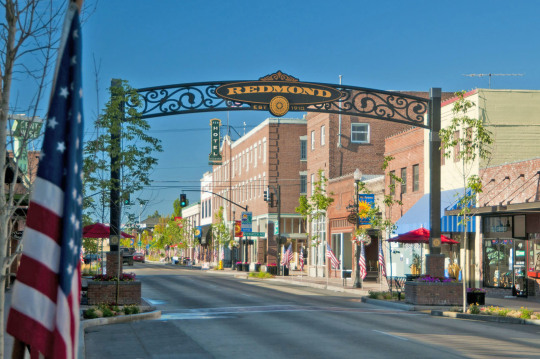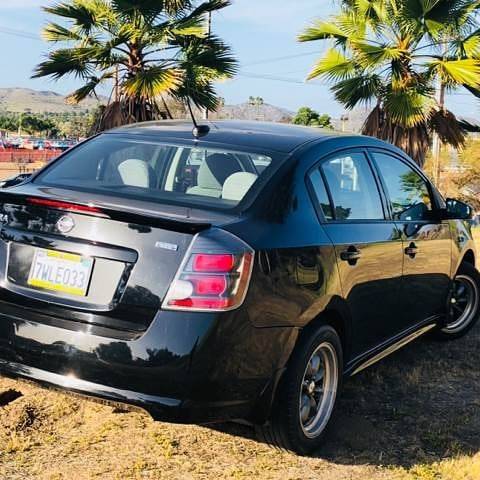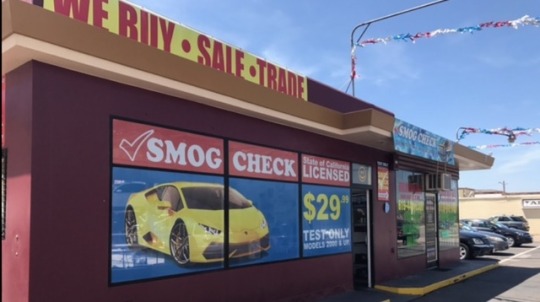Photo



www.magicbodyandsoul.com +16475098524 EMS Vaughan (via Burn Fat and Muscle growth)
0 notes
Photo



(via Body Contouring Recovery Guide | Magic Body and Soul)
0 notes
Photo



(via Exploring Body Contouring Techniques | Magic body and Soul)
0 notes
Photo


(via Luminous LED Therapy) www.magicbodyandsoul.com +16475098524 EMS VaughanBenefits of Luminous LED Light Therapy
0 notes
Link
www.magicbodyandsoul.com 16475098524 EMS Vaughan Luminous LED therapy at Magic Body
0 notes
Text
Cove Orchard to PDX shuttle airport
Cove Orchard to PDX shuttle airport
$ 80 00
Royal Junction +
Zip code: ———
Reservation Now
http://beavertonairporter.com/ +1 (503) 760 6565 PDX shuttle airport
Yarmouth is a town in Cumberland County, Maine, located twelve miles north of the state’s largest city, Portland. The town was settled in 1636 and incorporated in 1849. Its population was 8,349 in the 2010 census. As of 2015’s estimation, this is about 0.6% of Maine’s total population. Five islands (most notably Cousins Island and Littlejohn Island) are part of the town.
Yarmouth is part of the Portland–South Portland–Biddeford Metropolitan Statistical Area.
The town’s proximity to the Atlantic Ocean, and its location on the banks of the Royal River, which empties into Casco Bay less than a mile away, means it is a prime location as a harbor. Ships were built in the harbor mainly between 1818 and the 1870s, at which point demand declined dramatically. Meanwhile, the Royal River’s four waterfalls within Yarmouth, whose Main Street sits about 80 feet above sea level, resulted in the foundation of almost sixty mills between 1674 and 1931.
http://beavertonairporter.com/ +1 (503) 760 6565 PDX shuttle airport
The annual Yarmouth Clam Festival attracts around 120,000 people (around fourteen times its population) over the course of the three-day weekend.
Today, Yarmouth is a popular dining destination, with (as of February 2019) fourteen sit-down restaurants. This equates to an average of just over one restaurant per square mile of land area.
The town is accessed via two exits (15 and 17) on each side of Interstate 295. U.S. Route 1 also passes through the town to the west of I-295.
It has been designated a Tree City USA community every year since 1979. 40 years ago.
http://beavertonairporter.com/ +1 (503) 760 6565 PDX shuttle airport
Geography
According to the United States Census Bureau, the town has a total area of 22.94 square miles (59.41 km2), of which 13.35 square miles (34.58 km2) (58%) is land and 9.59 square miles (24.84 km2) (42%) is water.
Yarmouth is nearly square in form and is bisected by the Royal River (formerly Yarmouth River). The Cousins River separates it from Freeport to the northeast; Freeport and Pownal bound it to the east; North Yarmouth to the north; Cumberland to the west; and Casco Bay to the south. Also included as part of the town are Cousins Island, Lanes Island, Great and Little Moshier Islands, and Littlejohn Island.
http://beavertonairporter.com/ +1 (503) 760 6565 PDX shuttle airport

History
Traces of human occupation in the Yarmouth area date to about 2,000 BC. During the years prior to the arrival of the Europeans, many Native American cultures existed in the area, largely because of the natural features of the coastal land. Rivers provided several resources, including food, fertile soil, power for the mills and the navigability between the inland areas and the ocean.
In 1640, a 39-year-old Englishman, George Felt (b. 1601, d. 1693), who emigrated to Charlestown, Massachusetts, seven years earlier, purchased 300 acres of land at Broad Cove from John Phillips (b. 1607, d. c. 1667), a Welshman, and in 1643 became one of the first European settlers in Yarmouth. Felt went back to Massachusetts to sell his property there, before returning to Broad Cove around 1660. In 1670 he bought 2,000 more acres of land from Phillips.
http://beavertonairporter.com/ +1 (503) 760 6565 PDX shuttle airport
Felt was married to Elizabeth, with whom he had six children: Elizabeth (b. circa 1635), George (b. 1638, d. 1676), Mary (b. circa 1639), Moses (b. 1641), Aaron and another Moses (b. circa 1651). In 1684, Felt moved back to Massachusetts. He returned briefly, after 1678, when he was around 80 years old.
In 1646, Englishman William Royall (b. circa 1595, d. 1676) purchased a farm at what is now the upscale Lambert Point, next to Redding Creek, at the southern tip of Lambert Road, where he lived with his wife, Phoebe Green. The Royal River has ever-since borne his name, minus the second L, though two streets off Gilman Road — Royall Meadow Road and Royall Point Road — carry the original spelling. This stream and its vicinity were called by the Indians “Westcustogo” — a name that, until the early 1990s, was preserved by an inn of the same name on Princes Point Road at its intersection with Lafayette Street. (The building remains but it is now occupied by another business.) Royall moved to Dorchester, Massachusetts, in 1675, a year before his death. John Cousins (b. circa 1596, d. 1682) had arrived a year or more earlier than Royall, occupying the neck of land between the branches of the stream which has since been called Cousins River, and owning the island now also bearing his name.
http://beavertonairporter.com/ +1 (503) 760 6565 PDX shuttle airport
By 1676, approximately sixty-five people lived in Westcustogo. Soon after, however, conflicts forged by King Philip’s War caused them to abandon their homes and move south.John Cousins was injured and went to York, Maine, to receive treatment. There, he lived with Mary Saywood, to whom he later deeded his real estate in Casco Bay.
Also in 1676, George Felt Jr. was killed on Peaks Island during the conflicts. Felt’s wife, Philippe, moved to Salem, Massachusetts, where she married twice before her death in 1709.
Some settlers returned to their dwellings in 1679, and within twelve months the region became incorporated as North Yarmouth, the eighth town of the province of Maine.
http://beavertonairporter.com/ +1 (503) 760 6565 PDX shuttle airport
In 1688, while the inhabitants on the eastern side of the river were building a garrison, they were attacked by Indians, and attempted a defense. They continued the contest until nightfall, when the Indians retired. It was not long before they appeared again, in such force that the thirty-six families of the settlement were forced to flee, abandoning their homes for a second time.
Transportation
Beaverton Airporter know Grand Trunk Railway Station(1906), most recently (until 2018) a florist, is owned by Yarmouth’s Village Improvement Society. The apsidal form of its northern end is found in no other Maine station. The waiting room for the station stood on the land now occupied by Hancock Lumber (formerly Yarmouth Market) and Bank of America, as denoted by a plaque in the flowerbed of the properties
Yarmouth Crossing, where Main Street traverses the St. Lawrence and Atlantic Railroad, looking north from Railroad Square
http://beavertonairporter.com/ +1 (503) 760 6565 PDX shuttle airport
Road
U.S. Route 1 arrived in the late 1940s (at grade and also a bridge over Main Street). State Route 88 follows the course of Route 1’s predecessor, the Atlantic Highway. SR 115, established in 1925, also runs through the town.
In 1961, the Yarmouth section of Interstate 295 was built. It runs elevated through town (including, in controversial fashion, over the harborside at Lower Falls). It has two exits (15 and 17) in the town. Exit 15 became a four-ramp intersection in July 2013, when a northbound on-ramp was added.
http://beavertonairporter.com/ +1 (503) 760 6565 PDX shuttle airport
In 1727, five local men — Samuel Seabury, James Parker, Jacob Mitchell, Gershom Rice and Phineas Jones — were tasked with the management of the new town. Their affairs included laying out the highways. Roads (or, at least, routes) that appeared on subsequent maps are as follows (with today’s names):
In 1738, “a good road was built over the ledge from the meeting-house to the mills at the first falls which, although it was abandoned about 1800 for a less hilly course, may still be easily traced.”
1741: Atlantic Highway (now Route 88; which took a left onto Pleasant Street), Gilman Road, Princes Point Road, Highlands Farm Road (leading to Parker’s Point), Drinkwater Point Road (which led to two wharves), Morton Road and Old Town Landing Road (which led to another wharf). Large lot owners at the time included Walter Gendall, whose farm incorporated Duck Cove, beyond Town Landing Road in today’s Cumberland Foreside (Cumberland was not incorporated as its own town until 1821). Its dry stone boundary is still intact. Welshman John Powell (b. c. 1669, d. 1742) had a farm where today’s Schooner Ridge Road is. John Dabney’s 60-acre lot abutted this to the east. Dabney was a town selectman in 1737. Felt had a lot at the foot of the northern end of Pleasant Street, adjacent to Stony Brook. Royall’s farm, meanwhile, occupied the entire area bisected by Bayview Street.
http://beavertonairporter.com/ +1 (503) 760 6565 PDX shuttle airport
In 1756, “to accommodate the teams hauling lumber from the great pine forests inland to the seaboard, a new more convenient way was laid out by the way of Walnut Hill and the road constructed.”
In 1813, down at the First Falls, “the old road which clambered laboriously over the crest of the hill was replaced by a new street along the head of the wharves below the hill”. This is today’s Pleasant Street. Later, Smith Street became an uninterrupted offshoot into Riverside Cemetery until Lafayette Street was built, in the early 20th century, coming down the hill closer to the harbor. (It was named Lafayette Street in honor of General Lafayette.)
By 1847, Portland Street was in full swing, including the Elm Street offshoot that headed directly into the Upper Village. Main Street was, by now, well established.
For an 1894 map of Yarmouth, see here.
http://beavertonairporter.com/ +1 (503) 760 6565 PDX shuttle airport
A 1944 map shows the Atlantic Highway coming through town, aligning with what became Route 88 up to the point they meet at the end of Spring Street. Prior to the installation of U.S. Route 1, today’s curve of Route 88 as it passes Cumberland Farms instead continued directly north-east towards Cousins River. The section of Atlantic Highway that runs from Princes Point Road to the northern end of Pleasant Street was laid in the late 1920s.
http://beavertonairporter.com/ +1 (503) 760 6565 PDX shuttle airport
Roswell P. Greeley (b. 1847, d. 1903) established an express service between Portland and Yarmouth, employing a span of horses and large wagons. Azel Kingsley (b. 1860, d. 1948) ran a supplemental service minus the horses. It ran two services in each direction: southbound at 7.30 and 11.30 AM and northbound at 3.00 and 5.00 PM.
Rail
The town has two railroad junctions: Royal Junction (midway along Greely Road) and Yarmouth Junction (to the west of East Elm Street at Depot Road; its station is now gone). The two railroads passing through the town are the St. Lawrence and Atlantic Railroad (formerly Grand Trunk Railway; arrived in 1848) and Guilford Rail System‘s Kennebec & Portland (later Maine Central Railroad; 1849). http://beavertonairporter.com/ +1 (503) 760 6565 PDX shuttle airport
The Brunswick Branch of the Maine Central Railroad received a new lease of life in November 2012, when a northern extension of the Downeaster line was opened, carrying passengers five times a day (four on weekends) to and from Brunswick‘s Maine Street Station. The trains pass under two roads and over three crossings on their way through Yarmouth. They are (from south to north) West Main Street (overpass, just after Royal Junction), Sligo Road (road crossing), East Elm Street (road crossing, just after Yarmouth Junction), North Road (road crossing) and Granite Street (overpass).
On weekdays, the trains pass through northbound at 12.03 PM (#681), 4.03 PM (#683), 7.53 PM (#685), 9.18 PM (#687) and 1.23 AM (#689). On weekends, they pass through at 1.23 PM (#691), 7.43 PM (#695), 10.23 PM (#697) and 1.23 AM (#699).
Southbound weekday times: 4.50 AM (#680), 7.50 AM (#682), 11.30 AM (#684), 1.50 PM (#686) and 5.45 PM (#688). Weekend: 6.20 AM (#690), 7.50 AM (#692), 11.40 AM (#694) and 6.25 PM (#698).
Trolley cars of the Portland and Yarmouth Electric Railway Company used to run, every fifteen minutes, from Portland, through Falmouth Foreside, up and down Pleasant Streetand onto Main Street between 1898 and 1933, when the advent of the automobile made rail travel a less convenient option. Underwood Spring Park in Falmouth Foreside, with its open-air theater, casino and gazebo, was a popular gathering spot serviced by the trolley cars. The theater only existed for eight years, burning down in 1907. In 1906, a bridge was built over the Royal River, connecting the Brunswick and Portland trolleys at the Grand Trunk depot in town. The tracks ran down what is today’s walkers’ path to the Rowe School. The pedestrian bridge in the Royal River Park is built on old abutments for a trolley line which ran between Yarmouth and Freeport between 1906 and 1933.
Bus
The only bus route that services the town is Greater Portland Metro’s BREEZ. It has eleven southbound services to Portland and twelve northbound services to Brunswick on weekdays and an abbreviated Saturday schedule. There is no service on Sundays.
http://beavertonairporter.com/ +1 (503) 760 6565 PDX shuttle airport
On weekdays, the first southbound service arrives in Yarmouth at around 6.20 AM and the last one at around 8.45 PM. The first northbound service arrives at around 6.45 AM and the last one at around 9.50 PM.
On weekends, the first of six southbound services arrives at around 9.45 AM and the last one at around 8.55 PM. The first of seven northbound services arrives at around 8.30 AM and the last one at around 10.00 PM.
http://beavertonairporter.com/ +1 (503) 760 6565 PDX shuttle airport
There are three bus stop locations: the park and ride lot at the southbound exit 15 ramp of I-295, on Main Street in front of Yarmouth Town Hall, and on either side of Route 1 at Hannaford.
COVE ORCHARD TO PDX SHUTTLE AIRPORT
GREATER PORTLAND METRO
PDX AIRPORT SHUTTLE
PDX AIRPORT SHUTTLE SERVICE
PDX AIRPORT SHUTTLES
PDX SHUTTLE AIRPORT
PDX TO BEAVERTON
ROYAL JUNCTION
2 notes
·
View notes
Text
REDMOND, TRANSPORTATION TO PDX
Redmond Transportation to PDX
Redmond
$ 249 00
Zip code: 97756
Reservation Now
http://beavertonairporter.com/ +1 (503) 760 6565 Transportation to PDX
Redmond is a city in Deschutes County, Oregon, United States. Incorporated on July 6, 1910, the city is on the eastern side of Oregon’s Cascade Range, in the High Desert in Central Oregon. From Redmond there is access to recreational opportunities, including mountain biking, fishing, hiking, camping, rock climbing, white-water rafting, skiing, and golf. Redmond is a full-service municipality and one of the fastest-growing industrial and residential communities in Oregon. Redmond had a population of 30,011 in 2017, and the population continues to grow at a rate of about 6.7 percent each year.
The city encompasses 15.5 square miles (40 km2) and is on a plateau, at an elevation of 3,077 feet (938 m). Redmond is 15 miles (24 km) north of Bend—the county seat of Deschutes County—144 miles (232 km) from Portland, 129 miles (208 km) from Salem—the capital of Oregon—and 126 miles (203 km) from Eugene.
http://beavertonairporter.com/ +1 (503) 760 6565 Transportation to PDX
History
Redmond was named after Frank T. Redmond, who settled in the area in 1905. It was platted in 1906 by a company which would become part of Central Oregon Irrigation District building a canal. Electrification and the Oregon Trunk Railway reached Redmond in 1911. The rail link opened markets for farmers and merchants. By 1930, the town had grown to 1,000 and by 1940 had nearly doubled. In the 1940s, Redmond was a U.S. Army Air base and commercial air service was established at Roberts Field after World War II. In the 1950s, 60s, 70s, and most of the 80s, the population remained relatively static, growing slowly around a small commercial/retail center and manufacturing industry. However, during the 1990s, the population began to grow along with most of Deschutes County. Transportation to PDX know between 2000 and 2006, Redmond’s population grew 74.3%, making it among Oregon’s fastest-growing cities each year. This growth continued through 2006, increasing the population to 23,500. Its growth is fueled by employment and a lower cost of living.
http://beavertonairporter.com/ +1 (503) 760 6565 Transportation to PDX

2010 census
Transportation to PDX know as of the census of 2010, there were 26,215 people, 9,947 households, and 6,789 families residing in the city. The population density was 1,561.3 inhabitants per square mile (602.8/km2). There were 10,965 housing units at an average density of 653.1 per square mile (252.2/km2). The racial makeup of the city was 89.0% White, 0.4% African American, 1.3% Native American, 0.8% Asian, 0.2% Pacific Islander, 5.4% from other races, and 2.9% from two or more races. Hispanic or Latino of any race were 12.5% of the population.
There were 9,947 households of which 38.6% had children under the age of 18 living with them, 48.7% were married couples living together, 13.9% had a female householder with no husband present, 5.6% had a male householder with no wife present, and 31.7% were non-families. 24.0% of all households were made up of individuals and 9.6% had someone living alone who was 65 years of age or older. The average household size was 2.61 and the average family size was 3.07.
The median age in the city was 33.9 years. 27.9% of residents were under the age of 18; 8.8% were between the ages of 18 and 24; 28.8% were from 25 to 44; 21.9% were from 45 to 64; and 12.7% were 65 years of age or older. The gender makeup of the city was 48.3% male and 51.7% female.
http://beavertonairporter.com/ +1 (503) 760 6565 Transportation to PDX
Transportation
Air
Redmond is the location of the region’s only commercial airline service airport, Roberts Field. Air carriers include Alaska Airlines, American Airlines, Delta Air Lines and United Airlines with service operated by their respective regional airline affiliates via code sharing agreements. These carriers provide nonstop service to Portland, Seattle, Denver, Salt Lake City, Los Angeles, San Francisco and Phoenix Transportation to PDX is accessible withBeaverton Airporter . The U.S. Forest Service operates an air base and training center for firefighting, and Butler Aircraft, a fixed-base operator, flies DC-7 aircraft for firefighting efforts.
Highways
Redmond lies at the intersection of U.S. Route 126 and U.S. Route 97. The latter runs on an expressway alignment through the city known as the Redmond Parkway.
http://beavertonairporter.com/ +1 (503) 760 6565 Transportation to PDX
Rail
A BNSF main line runs north-south through the city; there are numerous spurs off of the main line which serve industrial rail customers. The closest Amtrak service is in the town of Chemult, approximately 75 miles (121 km) to the south; this station is served by the Coast Starlight route.
AFFORDABLE AIRPORT SHUTTLEAIRPORT CAR SERVICE PORTLAND OREGONBEAVERTON AIRPORTERPDX SHUTTLE AIRPORTPDX TO REDMONDPORTLAND SHUTTLE TO AIRPORTREDMONDREDMOND TO PDXREDMOND TRANSPORTATION TO PDXSHUTTLE SERVICE TO PDXTRANSPORTATIONTRANSPORTATION TO PDX
#AFFORDABLE AIRPORT SHUTTLEAIRPORT CAR SERVICE PORTLAND OREGONBEAVERTON AIRPORTERPDX SHUTTLE AIRPORTPDX TO REDMONDPORTLAND SHUTTLE TO AIRPORT#affordable#pdx shuttle
0 notes
Text
Mobile is the future and future is already here (Mobile Marketing)
Mobile is the future and future is already here (Mobile Marketing)
Prices of Smart Phones are dropping and more people are using Smart Phones with Internet. This opens a whole new channel of marketing for your business called – Mobile Marketing.
Mobile is the future and future is already here.
People outside their offices and home are constantly attached with their mobile and you can use this trend to directly communicate with you potential customers – on their…
View On WordPress
#affordable seo services#Apple Watch#Mobile Marketing#mobile marketing strategy#Mobile payment#Samsung Gear#search engine#SEO services#SEO services San Diego#Smart Clouds#smartphone#social media accounts
0 notes
Text
SEO vs. AdWords? Which Works Better for Your Business?
SEO vs. AdWords? Which Works Better for Your Business?
SEO vs. AdWords? Which Works Better for Your Business?
http://smartclouds.co/ +1(619) 800-3614 SEO services San Diego
There are a few important distinctions to consider, including the difference between PPC (pay-per-click) ads and SEO (search engine optimization) rankings
Improvements to your SEO can help your ranking on Google Searchby making your page more relevant to users. Search listings…
View On WordPress
#AdWords#AdWords is Google’s pay-per-click#google academy#Google Adwords#optimize your site#searches on Google#SEO#SEO services San Diego#SEO vs. AdWords#small businesses
0 notes
Photo

2007 #Chevrolet #TrailBlazer LS 4dr #SUV 4.999 Mileage: 146,000 Miles #used_cars CALL NOW (619) 449-6300 All used cars come with 30 days or 1000 miles limited warranty on engine or transmission Runs Excellently #Smog Check Passed Safety Inspection Very Good Conditions! Clean Title (at Redline Auto Sales)
0 notes
Photo

2009 #BMW 3 Series 328i 4dr #Sedan #SULEV Mileage: 98,000 Miles Fuel Type: #Gasoline Call Now : 619 797 7778 #used_cars #dealership #affordable (at Santee, California)
0 notes
Photo

2012 #Nissan #Sentra 76,000 Miles #used_cars 619 797 7778. Cell (at San Diego, California)
0 notes
Text
keyword optimization process
keyword optimization process
keyword optimization process
Whereas it’s actually not 100% essential that you include the primary keywordthat you want to rank a page for in that page’s title, if you leave it out then it makes ranking well for that keyword much more difficult. Without the keyword in the title, to rank for that keyword you’ll need other people to link to the page using that exact keyword. They may well do that, but it’s out of your control and so it isn’t a good position to be in.
Also, search engines ‘bold’ the words in their listings that exactly match the search querybeing made. If none of the words in your page title are in bold then your title will be less visible than the titles above and below it and so your CTR will drop. Whereas there’s benefits to having the keyword in the title, there’s no benefit to repeating it. You should actually avoid doing this unless it happens in the course of writing a title naturally.
If the keyword being targeted consists of more than one word, there’s s a benefit to having those words in the right order, but it’s not essential for good rankings. There’s also a benefit to having them closer to the start of the title than the end. If they’re nearer the start then it indicates to search engines that they’re more important, and it may also increase CTR, as searchers often skim read the start of titles in the results but won’t necessarily read each title in full.
Before see this video read bellow text in this tutorial you see some secret about keywords pattern
Having decided how many keywords to target and which keywords are best for you to target, based on relevance, commercial intent, search volume and competitiveness, you then need to correctly use those keywords on your website. The aim with this is to keyword optimize the pages on your site without anyone (who doesn’t have knowledge of SEO) being able to tell that you’ve done so. If you achieve this then you’ll please both visitors to your site and Google.
These days, keyword optimization, due to keyword spamming in the past, has been reduced in importance. It’s purpose is only to tell Google that, for example, this page is about x, and you want them to include it in their search results when people search for x and variations of x. Lessening the importance of keywords is very different from disregarding them altogether though.
Keywords are still a factor in how Google ranks websites, however, you shouldn’t expect to optimize your website with keywords and then see your site rise to the top of the search results for those keywords. You still need to, at a minimum, create content based around your keywords that you want to be top of Google and to build links to your site to boost it’s trust and authority.
Still, whereas just using keywords correctly on your site isn’t enough to get you good rankings, if you poorly optimize your site for your target keywords, you rule out any chance of ranking highly for your chosen keywords. So, you need to get the balance right between optimizing and over-optimizing – i.e. using a keyword on a page but not using the exact same keyword, in as many different places as possible, and as many times as you can.
These are the three issues to consider during the keyword optimization process:
Where to use keywords
How to vary keyword usage
How often to use keywords
Where to Use Keywords
There are 8 places that you can use keywords on your website to signal to Google which pages on your site you want to rank for which keywords:
Page Title: The page title, also known as a title tag or title element, is written in the coding of the page, like this – <title>Mention Your Keywords Here</title>. The page title isn’t displayed on the page itself, but is shown in the search results and in the web browser. You definitely need to add your the keyword for a page here, but don’t just put the keyword and nothing else. At the very least, put your business’s name either before or after the keyword.
Url: The web address for the page (i.e. www.yoursite.co.uk/mention-your-keywords-here). This is a good place to add keywords as you can use them without needing to use them in a catchy or enticing way like with the page title or H1 tag. Using keywords in your url isn’t possible when trying to rank your homepage though.
H1 Tag: The main header tag for the page. This is normally the title at the top of a page that tells the reader what the page is about – like an article title in a magazine or newspaper. This should ideally grab the interest of visitors to your site, to make them want to read on, so you need to balance using your keyword with making it interesting.
Body Content: The main written text on a page, such as a product/service description or an article. You only need to mention the keyword once, though you can mention it more times if that happens naturally when you’re writing. You definitely don’t need to aim for any kind of keyword density (2%, 5%, etc.).
Site Navigation Link Text: The text that forms the links in your top navigation bar or sidebar. Using your target keyword in its exact form here can look spam, and can negatively affect the user experience, so normally you’ll have to use a shortened or alternate version of it.
In-Content Link Text: The text that forms the links on your pages that link to other pages on your site (e.g. this links to a page on this site about SEO for internal links). Mix up your usage, by sometimes linking up the exact keyword and sometimes linking up a partial sentence that the keyword is in. Always keep the user experience in mind with this.
Image Tag: The html code used to add an image to the page (i.e. <img src=”file-name-including-keyword.jpg” title=”Title of the image including the keyword” alt=”Description of the image including the keyword”>). This text won’t show up on a page, unless, for some reason, the image itself doesn’t load. If there are multiple images on a page, you can add variations of the keyword to each of them. Find more data Image optimization.
Meta Description: The snippet of text that gets displayed in the search results to describe the content of the page. Search engines don’t use this as part of their ranking algothrim, however, they do highlight/bold any keywords used here, which makes your site stand out more in the search results and seem more relevant.
Google no longer takes into account the meta keywords tag (i.e. <meta name=”keywords” content=”Keyword 1, Variation of Keyword 1″>), as it’s too easy to manipulate and spam. As they don’t pay attention to the tag, it makes no difference at all to your site’s rankings if you use it or not. Some sites still use it, some don’t. If anything, you’re better to not use it, as doing so makes it easier for competitors to pinpoint what exactly keywords you’re targeting.
How to Vary Keyword Usage
You can target multiple keywords on one page but, unless they’re very closely related, it can be difficult to do. The best approach is to have one main keyword target for each page, and then to also target variations of that keyword with that same page. Keyword variations will typically be the main keyword with one or more extra words (online, service, review, buy, cheap, London, Yorkshire, etc.) added.
If the only difference between keywords is the order of the words, a minor word (a, an, in, on, to, etc.) or plurality (s, ies, etc.), then you can target those keywords on the same page as multiple main keyword targets, as Google recognises each of those variations as being nearly the same, and will generally return pretty much the same set of search results for each of them.
So, if you wanted to rank a page on your site for ‘San Diego SEO service’, you could try and rank that same page for…
SEO services San Diego
SEO services in San Diego
San Diego SEO services
Best San Diego SEO services
Best San Diego SEO services company
…by using variations of the main keyword in the keyword placement options listed above. For example, use….
Page Title: SEO services San Diego
H1 Tag: Best SEO services company San Diego
Body Content: If you need an affordable SEO Service in San Diego…
Image Tag: – John-San Diego- SEO Service
Meta Description: We are one of the best SEO Service in San Diego …
That would be preferable to using the main target keyword (i.e. ‘SEO services San Diego’) in the page title, h1 tag, body content, image tag and Meta description. As well as removing the risk of, and a penalty for, over-optimizing for ‘SEO services San Diego’, it improves your rankings for those keyword variations that you use. So, not only is it not necessary to use the exact keyword repeatedly, it’s actually more beneficial for you not to do so.
You also don’t only need to use keywords (main or variations) in their exact form or in isolation. You can, and again it’s beneficial to do so, use them as part of a phrase or use dividers, like dashes (-) or pipes (|). This can make your keyword usage look more natural to both visitors and search engines. Sticking with the ‘Birmingham Accountants’ example, you could do the following…
Page Title: “SEO services San Diego | Name Of Company” or “Name Of Company | SEO services | San Diego”
H1 Tag: “We are one of the best SEO Service in San Diego” or “Name Of Company – best SEO Service San Diego”

How Often To Use Keywords
The page title is by far the most important place to add the keyword for a page, so make sure, at the very least, you use the keyword there. If you need to make it part of a phrase, change the order of the words, or add a divider or two, so as to make it look more professional or to target more keywords, then that’s fine – it won’t prevent you ranking 1st for that keyword.
In addition to using the keyword in the page title try to use it, or a variation of it, in at least 2 of these 3 places…
Url
H1 Tag
Body Content
…and at least 2 of these 5 places…
Site Navigation Link Text
In-Content Link Text
Image Tag
Meta Description
If you do that, then your keyword, or variations of it, will be in at least 5 of the 8 keyword placement options, and it should be clear to Google what keywords to rank that page for. You can safely use your keyword in all 8 places, however, if you do so, it’s essential that you use multiple variations of the keyword. If you list the exact keyword target (e.g. ‘SEO Service San Diego) in each of those 8 places, then you’re really risking an over-optimization penalty.
You don’t have to use a keyword, or variations of it, x amount of times to be able to rank a page for that keyword – there’s no magic number to aim for. What you should not do is let the quality or professionalism of a page suffer because you’re trying to force a keyword in a couple more times. You should always place the readability and usability of your site above keyword usage.
If, for whatever reason, you can only use a keyword in a couple of places on a page, that doesn’t necessarily mean that ranking well for that keyword is impossible – it just makes the process of ranking it a bit more difficult. You can still rank 1st in the search results for that keyword if you have better content and more high quality backlinks than your competitors.
best seo tips affordable seo services, Best San Diego SEO services, Best San Diego SEO services company, Body Content, cheap seo services, Image Tag, In-Content Link Text, keyword optimization process,Meta Description, SEO services, SEO services in San Diego, SEO services San Diego, Smart Clouds
0 notes
Text
keyword optimization process
keyword optimization process
Whereas it’s actually not 100% essential that you include the primary keyword that you want to rank a page for in that page’s title, if you leave it out then it makes ranking well for that keyword much more difficult. Without the keyword in the title, to rank for that keyword you’ll need other people to link to the page using that exact keyword. They may well do that,…
View On WordPress
#affordable seo services#Best San Diego SEO services#Best San Diego SEO services company#Body Content#cheap seo services#Image Tag#In-Content Link Text#keyword optimization process#Meta Description#SEO services#SEO services in San Diego#SEO services San Diego#Smart Clouds
0 notes
Text
Relaunch Your Website without Affecting SEO
Relaunch Your Website without Affecting SEO
http://smartclouds.co/ +1(619) 800-3614 SEO services San Diego
Relaunch Your Website without Affecting SEO(7 Steps)
Your company has a revamp is in order. A relaunch definitely involves changing the overall look and design of the site. Change is really necessary because Google constantly updates its algorithm and includes new ranking factors that are based on user friendliness,…
View On WordPress
#affordable seo services#hire an SEO practitioner#link authority#Make Use of Email Subscription#Meta Robots Tag#organic traffic#Relaunch Website without Affecting SEO#Search Engine Optimization#SEO services#SEO services San Diego#Smart Clouds#web design#XML sitemap
0 notes
Text
Improve Your Local SEO
Improve Your Local SEO
10 Steps to Help Improve Your Local SEO
There are several online marketing options available today that your local businesses can utilize to improve your website traffic, leads, and sales. In the past there was print advertising, TV, and radio. Now, with so many different online-based options available it has left many small business owners confused.
http://smartclouds.co/ +1(619) 800-3614 SEO
View On WordPress
#Bing Place#Blogging#Facebook#google#google Mobile Friendly Test#Improve Your Local SEO#LinkedIn#local business#Local Listing Pages#Local search engine optimization#on-page optimization#SEO benefit#SEO services San Diego#Smart Clouds
0 notes

